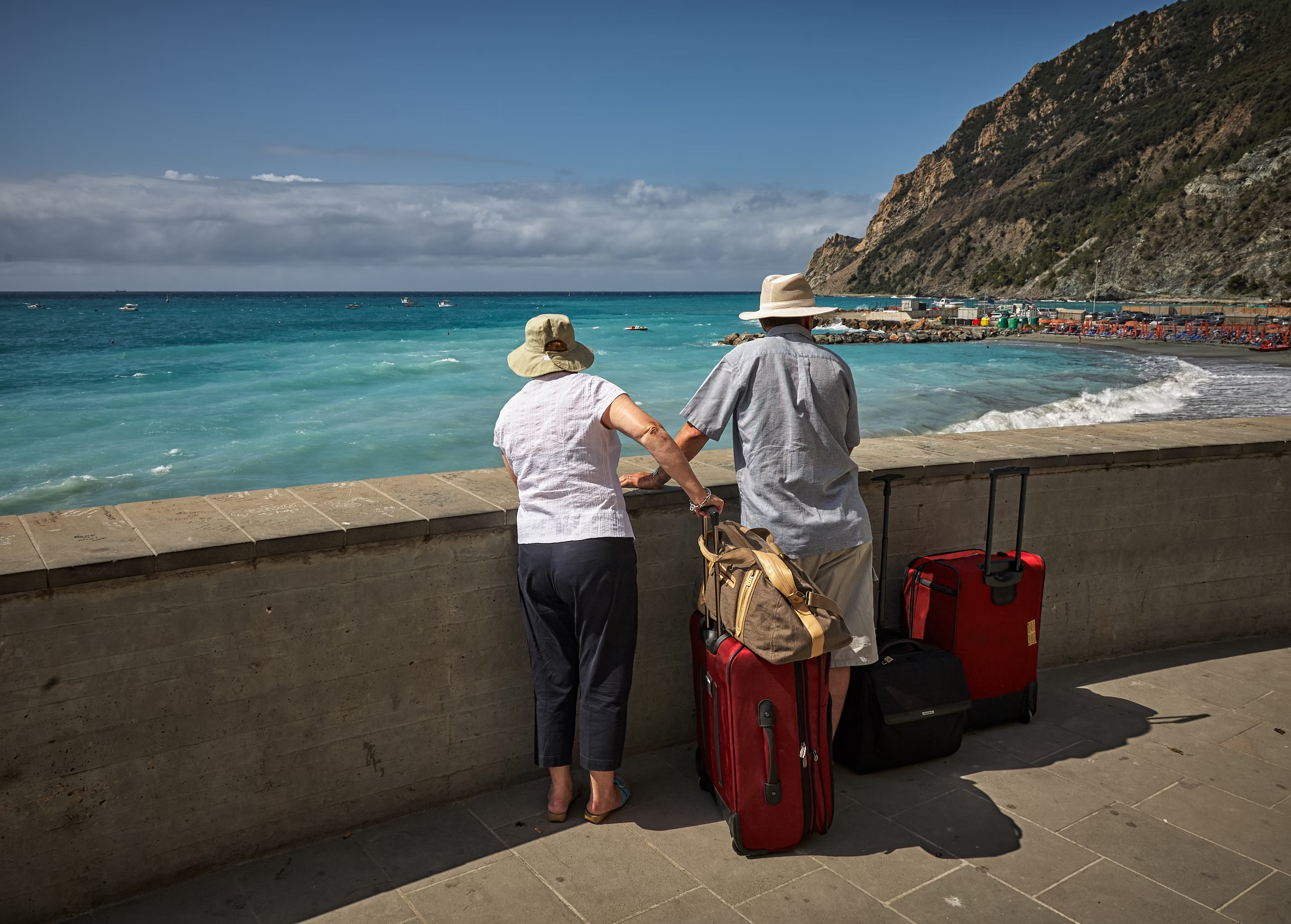Embarking on a journey to a Spanish-speaking country can be both exhilarating and daunting. The language barrier often poses a significant challenge for many travelers.
However, this is where “Survival Spanish” comes into play. It’s more than just mastering a set of phrases; it’s about bridging cultural gaps, ensuring smoother travels, and enriching your overall experience.
As you delve into this guide, you’ll discover that learning Survival Spanish is not an overwhelming task. The phrases and tips provided are carefully selected to be easily learnable and highly useful.
You’ll learn not just what to say, but also how to say it, with insights into pronunciation and local dialects. This approach ensures that you’re not just memorizing words, but truly understanding how to use them effectively in real-life situations.
Embarking on your journey with a foundational knowledge of Spanish will undoubtedly open doors to richer, more engaging travel experiences. It will allow you to navigate new environments with confidence, interact with locals more meaningfully, and create memories that go beyond the typical tourist experience.
As you master these basic phrases and delve into the cultural nuances of Spanish-speaking countries, you’ll find that every interaction becomes a step toward a more profound understanding of the world.
Our goal is to equip you with the tools you need not just to survive, but to thrive during your travels in Spanish-speaking countries. Let’s begin this exciting journey into the world of Survival Spanish, a journey that promises to be as rewarding as it is enlightening.
What Is Survival Spanish?
Survival Spanish is the key to unlocking a world of more authentic experiences. Whether you’re navigating bustling city streets, exploring quaint villages, or interacting with locals at a lively market, knowing even basic Spanish phrases can transform these interactions from mundane to memorable.
It’s not just about asking for directions or ordering food; it’s about connecting on a human level, sharing smiles, and understanding the local customs and traditions.
This guide is designed to be your companion in various travel scenarios. From greeting locals warmly to expressing gratitude, from seeking help in emergencies to making small talk, each phrase you learn will pave the way for a smoother journey.
But Survival Spanish goes beyond practicality. It’s also about showing respect for the local culture. By attempting to speak the language, even in its most basic form, you demonstrate a willingness to immerse yourself in the local way of life, which is often appreciated by native speakers.
Basic Greetings and Pleasantries in Spanish
Venturing into the realm of Spanish-speaking countries, you’ll quickly realize the power of a simple greeting. It’s the key that opens the door to everyday interactions, an essential tool in your Survival Spanish toolkit.
Let’s explore the most common greetings and pleasantries, essential for anyone looking to navigate social situations with ease and grace.
Common Greetings for Different Times of the Day
Spanish, like any language, has its unique set of greetings that vary depending on the time of day. Understanding these will not only help you in initiating conversations but also in responding appropriately, showcasing your respect for local customs.
Morning Greetings
Start your day right by saying “Buenos días” (BWEH-nos DEE-as), which means “Good morning.” It’s a friendly and polite way to greet everyone, from the hotel staff to local shopkeepers.
Afternoon and Evening Greetings
As the day progresses, switch to “Buenas tardes” (BWEH-nas TAR-des), meaning “Good afternoon,” typically used from noon until dusk.
As night falls, “Buenas noches” (BWEH-nas NOH-ches) or “Good night” becomes the appropriate greeting, whether you’re entering a restaurant for dinner or returning to your lodging.
Polite Expressions and Courtesy Phrases
The beauty of Spanish lies in its warmth and politeness, embodied in everyday expressions. Mastering these will not only enhance your communication but also endear you to local residents.
Please and Thank You
The golden words in any language, “Por favor” (por fa-VOR) for “Please,” and “Gracias” (GRAH-syas) for “Thank you,” are indispensable. They can turn a simple request into a polite interaction, reflecting your manners and respect.
You’re Welcome and Excuse Me
To respond to thanks, use “De nada” (de NA-da), meaning “You’re welcome.” In situations where you need to get past someone or attract attention, “Perdón” (pehr-DON) or “Disculpe” (dis-KUL-peh) – both translating to “Excuse me” – are your go-to phrases.
How are you?
Engaging in small talk often starts with “¿Cómo está?” (KOH-moh es-TAH) or “How are you?” in a formal setting. In informal scenarios, “¿Cómo estás?” (KOH-moh es-TAS) is more appropriate. These phrases show genuine interest in the person’s well-being and are a great way to start a conversation.
Navigating Directions and Transportation
When traveling in Spanish-speaking countries, understanding how to navigate directions and transportation is crucial. This skill not only eases your travel but also enhances your sense of independence and adventure.
Let’s delve into the essential Spanish phrases that will help you ask for and understand directions, and navigate the public transportation systems effortlessly.
Asking for and Understanding Directions
Lost in a new city? Need to find a landmark? Knowing how to ask for directions in Spanish is a lifesaver. Here are some key phrases:
How do I get to…?
Start with “¿Cómo llego a…?” (KOH-moh YEH-goh ah…?) followed by your destination. For example, “¿Cómo llego al museo?” (How do I get to the museum?)
Where is…?
Use “¿Dónde está…?” (DOHN-deh es-TAH…?) for inquiring about the location of a place. For instance, “¿Dónde está la estación?” (Where is the station?)
Is it far?
To gauge the distance, ask “¿Está lejos?” (es-TAH LEH-hos?). This will help you decide whether to walk, take a cab, or use public transport.
Turn left/right
Understanding directions is as important as asking. “Gire a la izquierda” (HEE-reh ah lah ees-KYAIR-dah) for “Turn left,” and “Gire a la derecha” (HEE-reh ah lah deh-REH-chah) for “Turn right” are key phrases.
Essential Phrases for Public Transportation
Navigating public transport in a foreign country can be daunting. These phrases will help you move around like a local:
Which bus/train goes to…?
Ask “¿Qué autobús/tren va a…?” (keh ow-toh-BOOS/tren vah ah…?) when you’re unsure about which line to take.
Where is the bus/train station?
Find the nearest station with “¿Dónde está la estación de autobuses/trenes?” (DOHN-deh es-TAH lah es-tah-see-OHN deh ow-toh-BOO-ses/treh-nes?).
Does this bus/train stop at…?
Ensure you’re on the right route by asking “¿Este autobús/tren para en…?” (ES-teh ow-toh-BOOS/tren PAH-rah en…?).
I need a ticket to…
When buying tickets, say “Necesito un boleto para…” (neh-seh-SEE-toh oon boh-LEH-toh PAH-rah…), followed by your destination.
Armed with these phrases, navigating streets and using public transportation in Spanish-speaking countries will become less intimidating and more enjoyable. Remember, locals often appreciate your effort to speak their language and are usually happy to help.
Dining Out: Spanish Phrases for Food and Drinks
Experiencing the local cuisine is a highlight of any trip to a Spanish-speaking country. Whether you’re sitting down at a traditional restaurant or grabbing a bite at a bustling street market, knowing how to order food and drinks in Spanish will enrich your culinary adventures.
Let’s discuss key phrases for ordering and communicating dietary preferences or restrictions.
Ordering Food and Beverages
When it comes to ordering food and drinks, clear communication is key. Here are some phrases that will help you navigate menus and make orders like a local.
I would like to order…
Begin with “Me gustaría pedir…” (meh goos-ta-REE-ah peh-DEER…) followed by your choice. For example, “Me gustaría pedir paella” means “I would like to order paella.”
Can I have…?
Another way to order is using “¿Puedo tener…?” (PWEH-doh TEH-ner…?). For instance, “¿Puedo tener una cerveza?” translates to “Can I have a beer?”
What do you recommend?
If you’re unsure what to order, ask the server for suggestions with “¿Qué recomienda?” (keh reh-koh-mee-EN-dah?).
The check, please
To ask for the bill, say “La cuenta, por favor” (lah KWEN-tah, por fa-VOR).
Dietary Restrictions and Special Requests
Communicating your dietary needs is crucial, especially if you have allergies or preferences. Here are some phrases that can help:
I am vegetarian/vegan
Let the staff know your dietary preference with “Soy vegetariano/a” (soy veh-heh-tah-ree-AH-no/ah) for vegetarians or “Soy vegano/a” (soy veh-GAH-no/ah) for vegans.
I am allergic to…
If you have allergies, it’s important to specify with “Soy alérgico/a a…” (soy ah-LEHR-hee-koh/ah ah…), followed by the allergen. For example, “Soy alérgica a los cacahuetes” means “I am allergic to peanuts.”
Can you make it without…?
If you need to modify a dish, use “¿Puede hacerlo sin…?” (PWEH-deh ah-THEHR-loh seen…?). For example, “¿Puede hacerlo sin gluten?” means “Can you make it without gluten?”
Is this dish spicy?
To inquire about the spice level, ask “¿Este plato es picante?” (ES-teh PLAH-toh es pee-KAHN-teh?).
With these phrases in your pocket, dining out in Spanish-speaking countries will not only be less daunting but also a more enjoyable and culturally immersive experience.
Shopping and Bargaining in Spanish
When shopping in Spanish-speaking countries, it’s helpful to know some common phrases to facilitate your experience. Here are some essential phrases to use:
Common Phrases for Shopping
¿Cuánto cuesta?
How much does it cost?
¿Tiene esto en otro color/talla?
Do you have this in another color/size?
¿Puede mostrarme algo similar?
Can you show me something similar?
Me gustaría comprar esto.
I would like to buy this.
¿Aceptan tarjeta de crédito?
Do you accept credit cards?
¿Tienen algún descuento?
Do you have any discounts?
¿Puedo probármelo?
Can I try it on?
¿Puede envolverlo para regalo?
Can you wrap it as a gift?
No estoy seguro/a. Voy a pensarlo.
I’m not sure. I’ll think about it.
¿Dónde están los probadores?
Where are the fitting rooms?
Using these phrases will make your shopping experience more enjoyable and efficient while showing respect for the local culture.
Negotiating Prices and Understanding Currency
When it comes to negotiating prices and handling currency matters, here are some key phrases and considerations:
¿Es el precio final?
Is this the final price?
¿Puede hacerme un descuento?
Can you give me a discount?
¿Cuál es su mejor precio?
What’s your best price?
¿Aceptan dólares/euros?
Do you accept dollars/euros?
¿Cuál es el tipo de cambio?
What is the exchange rate?
¿Tienen una política de devolución?
Do you have a return policy?
¿Puedo pagar con tarjeta de débito/crédito?
Can I pay with a debit/credit card?
¿Puedo pagar en efectivo?
Can I pay in cash?
¿Hay impuestos adicionales?
Are there any additional taxes?
¿Puede incluir el envío en el precio?
Can you include the shipping in the price?
Being familiar with these phrases and currency-related questions will help you navigate transactions and negotiate prices effectively. It’s also a good idea to have a basic understanding of the local currency and exchange rates to ensure you get a fair deal.
Handling Emergencies and Healthcare
In times of medical emergencies or health-related situations, being able to communicate effectively is crucial. Here are some key phrases to help you navigate such situations:
Key Phrases for Medical Situations and Emergencies
In times of medical emergencies or health-related situations, being able to communicate effectively is crucial. Here are some key phrases to help you navigate such situations:
Necesito un médico.
I need a doctor.
Necesito una ambulancia.
I need an ambulance.
Me siento muy enfermo/enferma.
I’m feeling very sick.
Me duele aquí.
It hurts here.
Tengo una alergia.
I have an allergy.
Tengo una condición médica.
I have a medical condition.
Por favor, ayúdame.
Please help me.
Tengo seguro médico.
I have health insurance.
Estoy aquí para una cita médica.
I’m here for a medical appointment.
¿Dónde está la farmacia más cercana?
Where is the nearest pharmacy?
¿Puede recomendarme un especialista?
Can you recommend a specialist?
In situations where you need assistance from authorities or law enforcement, knowing how to communicate your needs is essential. Here are some phrases to use when seeking help:
Necesito reportar una emergencia.
I need to report an emergency.
Ha habido un accidente.
There has been an accident.
He perdido mi pasaporte/cartera/bolso.
I’ve lost my passport/wallet/bag.
¿Puede ayudarme a encontrar a un oficial de policía?
Can you help me find a police officer?
He sido víctima de un crimen.
I’ve been a victim of a crime.
Necesito asistencia legal.
I need legal assistance.
¿Puede llamar a la embajada/consulado por mí?
Can you call the embassy/consulate for me?
These phrases can be invaluable when dealing with emergencies or seeking assistance from authorities. It’s important to stay calm and clear when communicating your needs to ensure a swift and effective response.
Accommodation and Lodging Essentials
When it comes to booking a room and checking in at a hotel, effective communication is key. Here are some essential phrases and conversations for these situations:
Booking a Room:
Quisiera hacer una reserva.
I would like to make a reservation.
¿Tienen habitaciones disponibles?
Do you have any available rooms?
¿Cuál es la tarifa por noche?
What is the rate per night?
¿Está incluido el desayuno?
Is breakfast included?
¿Puedo elegir una habitación para fumadores/no fumadores?
Can I choose a smoking/non-smoking room?
Me gustaría una habitación con vista.
I’d like a room with a view.
¿Qué tan lejos está el hotel del aeropuerto/estación de tren?
How far is the hotel from the airport/train station?
Check-In Conversations and Requests:
During your check-in process and stay at a hotel, you might have various requests and queries. Here are some phrases to help you communicate your needs:
Tengo una reserva a nombre de [Su Nombre].
I have a reservation under the name [Your Name].
¿A qué hora es la salida mañana?
What time is check-out tomorrow?
¿Hay Wi-Fi disponible en las habitaciones?
Is there Wi-Fi available in the rooms?
¿Puede llamarme un taxi, por favor?
Could you please call me a taxi?
¿Hay un restaurante en el hotel?
Is there a restaurant on-site?
¿Puedo tener toallas/artículos de tocador adicionales?
Can I have extra towels/toiletries?
¿Puede proporcionar una llamada de despertador a las 7 AM?
Can you provide a wake-up call at 7 AM?
¿Puede hacer arreglos para el servicio de lavandería?
Could you please arrange for laundry service?
These phrases and conversations will help you have a comfortable and hassle-free stay at a hotel or lodging establishment. Politeness and clear communication are key when interacting with hotel staff to ensure a pleasant experience.
Cultural Tips and Etiquette in Spanish-Speaking Countries
Understanding cultural nuances is crucial when interacting in Spanish-speaking countries.
Greetings are often warm and personal, with kisses on the cheek or hugs from friends and family. Handshakes are more common in formal settings. Respect for elders is highly valued, so using formal titles like “Señor” and “Señora” unless invited to use first names is appreciated.
Punctuality varies but generally, arriving on time for social and business appointments is a good practice. Mealtime customs include greeting everyone at the table individually, saying “Buen provecho” before eating, and keeping hands on the table (but not elbows) during the meal.
Additionally, many Spanish-speaking countries have vibrant fiestas and celebrations, so participating and respecting local traditions and customs is essential.
Etiquette in Social and Business Settings
In social and business settings, understanding and adhering to etiquette is important for positive interactions. Dress modestly and appropriately, with formal attire being common in business settings and casual wear acceptable in social contexts.
Greetings should match the level of formality, with a firm handshake and eye contact in business settings. When giving gifts, small, neatly wrapped tokens are appreciated, especially when visiting someone’s home.
During meals, it’s customary to wait for the host or hostess to start eating, keep hands on the table (but not elbows), and avoid resting wrists on the table’s edge. In business meetings, beginning with small talk before discussing business matters is common, as building relationships and trust is highly valued.
While English is often spoken in business settings, making an effort to use basic Spanish phrases shows respect for the local culture and can enhance interactions in Spanish-speaking countries.
Practice and Resources for Learning Survival Spanish
To become proficient in survival Spanish, consistent practice is essential. Start by immersing yourself in the language as much as possible. Listen to Spanish podcasts, watch Spanish-language TV shows or movies, and try to pick up everyday phrases.
Practice speaking by finding a language exchange partner or joining a language-learning community where you can converse with native speakers. Additionally, consider using language learning apps and websites that offer interactive lessons and exercises tailored to beginners.
Flashcards with common phrases and vocabulary can be a handy tool for daily practice. Finally, don’t hesitate to use your newfound Spanish skills in real-life situations, such as ordering food at a Spanish-speaking restaurant or asking for directions when traveling.
Recommended Resources and Tools for Learning
There are various resources and tools available to help you learn survival Spanish effectively. Start with language learning apps like Duolingo, Babbel, or Memrise, which provide structured lessons and exercises for beginners.
For a more immersive experience, consider Rosetta Stone or Pimsleur; both focus on audio-based learning and pronunciation. Books and online courses, such as those from Assimil or SpanishDict, offer comprehensive lessons with grammar explanations.
Language exchange websites like Tandem and HelloTalk connect you with native Spanish speakers for conversation practice. Additionally, YouTube features many Spanish-language learning channels that offer free lessons and tutorials.
If you prefer a classroom setting, look for local language schools or community college courses that offer beginner Spanish classes. Combining these resources and tools can help you build a solid foundation in survival Spanish.
Thanks for Checking Out Our Guide Survival Spanish!
Acquiring survival Spanish is a valuable asset for any traveler venturing into Spanish-speaking regions.
Beyond the convenience it offers, such as navigating everyday situations with ease, ordering food, asking for directions, and seeking help when needed, learning even the basics of the language opens up doors to meaningful cultural interactions. It fosters a deeper connection with the local people and their way of life, enriching your travel experiences.
Moreover, showing an effort to communicate in the native language demonstrates respect for the local culture and often elicits a warm and welcoming response. It’s not just about words; it’s about bridging cultural divides and creating memorable encounters.
So, as you embark on your adventures abroad, consider the numerous benefits of learning survival Spanish, as it can truly enhance your journey and leave you with unforgettable memories.
¡Buena suerte y buen viaje! (Good luck and safe travels!)



